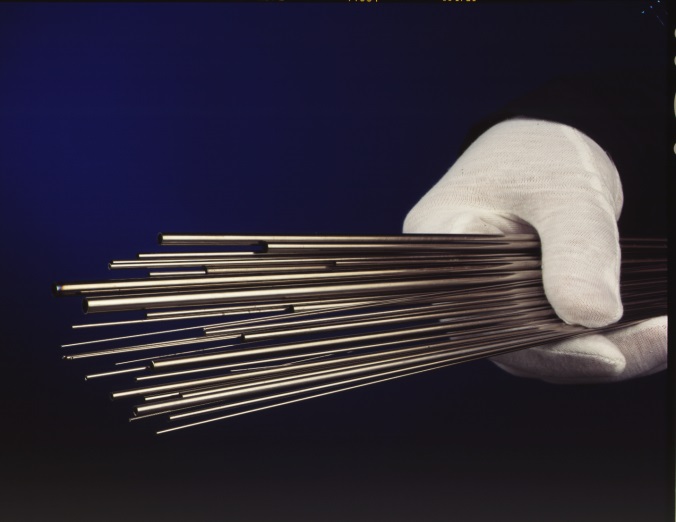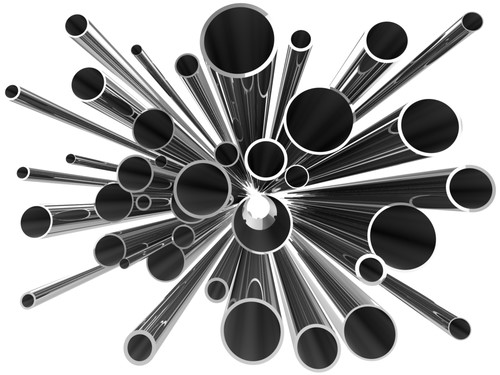 Steel pipe and tubing are everywhere in automotive, aerospace, industrial, architectural, research, and medical applications. The most common elements are aluminum and stainless steel pipe and tube materials, and each has attributes that make it the right choice for a given industry. Once you’ve determined whether you need piping or tubing, next you’ll want to choose the best metal for your application.
Steel pipe and tubing are everywhere in automotive, aerospace, industrial, architectural, research, and medical applications. The most common elements are aluminum and stainless steel pipe and tube materials, and each has attributes that make it the right choice for a given industry. Once you’ve determined whether you need piping or tubing, next you’ll want to choose the best metal for your application.
Choosing the Right Metal
When you’re choosing a tubing material, the choices might seem overwhelming; both aluminum and stainless steel pipe and tube come in a variety of alloys and tempers, each with its own physical and mechanical properties. Each metal has general properties that are true for all its alloys.
Mechanical Properties
One factor to take into consideration is the mechanical properties that are required for your application. In situations where strength is more important, you may choose stainless steel for its good strength-to-weight ratio and ability to gain significant strength from cold working. If you are focused on keeping components lightweight, aluminum may better suit your application. An aluminum part weighs one-third less than a stainless steel part of the same dimensions.
Corrosion Resistance
Another factor to consider is the corrosion resistance or heat resistance of metal tubing. In general, both stainless steel and aluminum offer corrosion protection, and the amount will vary depending upon the alloy chosen. The passivating oxide films that form on the surfaces of both metals help keep the metals from corroding.
Heat Resistance
One downside of passivation is that the oxide layer can inhibit electrical conduction. Consequently, stainless steels are not known for good electrical conductivity. Aluminum’s high conductivity, along with thermal conductivity three times greater than that of steel, has led to its use in power transmission lines. If moving electricity or heat is important in your application, aluminum may be the better option.
Regardless of whether your tube is intentionally conducting heat, you’ll want to ensure it can handle the temperature of its operating environment. Stainless steels with high concentrations of chromium and nickel retain strength at high temperatures. On the opposite end of the spectrum, aluminum’s tensile strength increases as temperature drops and stays tougher at cold temperatures than many steels.
Is Stainless Steel the Same as Aluminum?
In summary, the main factors to consider when choosing what metal and alloy are best for your application are the mechanical properties, corrosion resistance, and heat resistance. Once you’ve chosen a category of metal that best fits your application, you’re ready to choose the exact alloy and temper you need.
Stainless Steel 101
For applications that lend themselves to stainless steel, you’re sure to find a grade that works from the wide range of iron-carbon-chromium alloys covered by that term. The most common steel pipe and tube grades are T304 and T316, part of the 300 series of stainless steel alloys in which austenitic iron alloys with nickel in addition to chromium and carbon.
T304 is considered the classic stainless steel alloy. Also known as 18/8, it contains 18% chromium and 8% nickel. T316 is another familiar alloy, especially in food service and medical applications; it contains molybdenum for additional corrosion protection.
The properties of a given alloy depend greatly on its heat treatment and cold working history. To obtain a specific property or physical attribute for your tubing, check with a metallurgist or tubing specialist who can guide you to the right combination of alloy and processing for your application.
Tubing specialists can also advise you on tubing size and fabrication processes. Stainless steel tubing comes in fractional and metric outer diameters (ODs) ranging from 1/16 to 8 in. for tubing and to as small as 0.008 in. for hypodermic applications. Fabrication can include bending, coiling, end forming, welding, and cutting.
Once you have the right stainless steel tubing installed in your application, you might start to think about what to do with it at the end of its useful life. Although the alloying elements that go into stainless steel make it difficult to recycle, rest assured that about 50% of all new stainless steel is fabricated from melted-down steel scrap.
Aluminum ABCs
The most common aluminum alloys used for tubing and pipe are 2024, 3003, 5052, 6061, 7075. Their primary alloying elements of copper, manganese, magnesium, silicon, and zinc lend each alloy slightly different physical and mechanical attributes.

A wide range of aluminum tubing sizes is available. Aluminum tubes are often chosen for their lightweight, electrical, and thermal conductivity and corrosion resistance.
For instance, engineers specify alloys 2024, 6061, and 7075 for aircraft structures because of their high strength-to-weight ratios and good fatigue resistance. Untreated 2024 and 7075 are prone to corrosion, while 6061 is innately corrosion-resistant and easier to weld. 7075 provides higher strength with less weight but costs more.
Alloy 3003 is good for applications that need corrosion resistance and high strength with less of an emphasis on ductility. For applications that rely on many joints, you might choose the highly weldable 5052.
As with steel, alloy composition alone doesn’t tell the whole story. The exact properties of a given aluminum alloy also depend on its temper or heat-treatment history. Temper O indicates the alloy is used as annealed, at its highest ductility and lowest strength. Tempers beginning with “T,” like T3, T4, and T6, involve heat treatments. Cold working or aging steps often follow to strengthen the metal by toughening it on the grain or molecular level.
Once you’ve chosen the right aluminum alloy and temper for your application, your next steps will be specifying its size and any additional fabrication operations. Aluminum tubing ODs typically range from 0.062 in. to 3.00 in. with wall thicknesses from 0.010 in. to 0.250 in. Aluminum tubing suppliers can cut, bend, flare, and fabricate tubes to your requirements. After your aluminum tubing enjoys a long service life, you can plan to recycle it since it is made from 99.8% pure aluminum alloy.
Still Have Questions About Aluminum vs. Stainless Steel Pipe and Tube?
If you still have questions regarding the difference between aluminum and stainless steel pipe and tube applications, let the experienced team at Eagle Stainless provide you with custom products and services to fit your needs. Contact us today to learn more!



